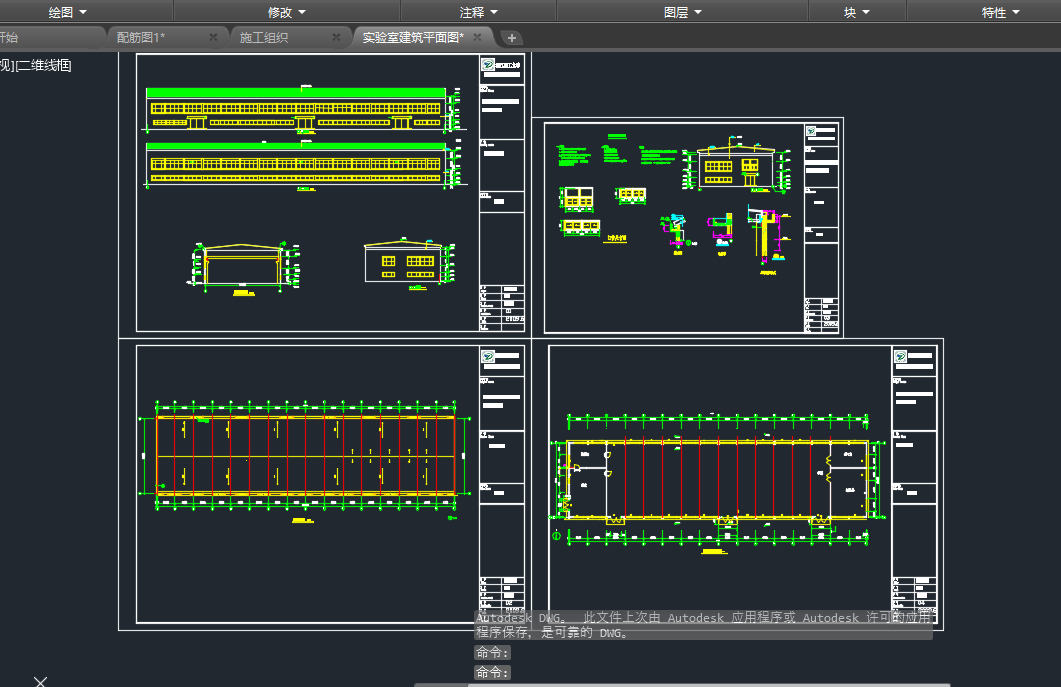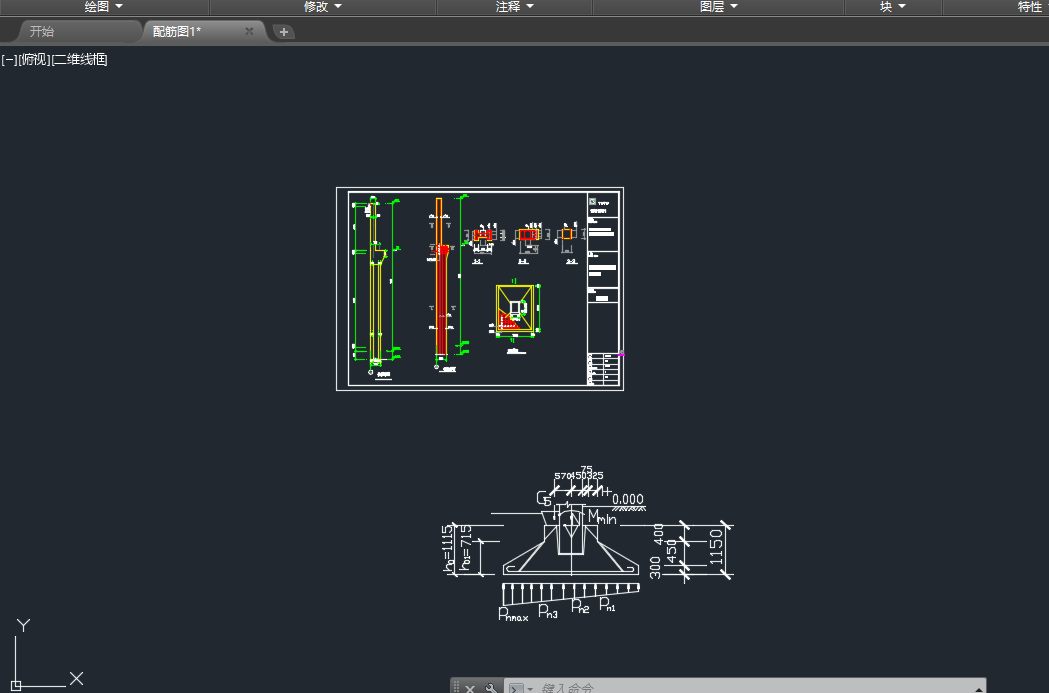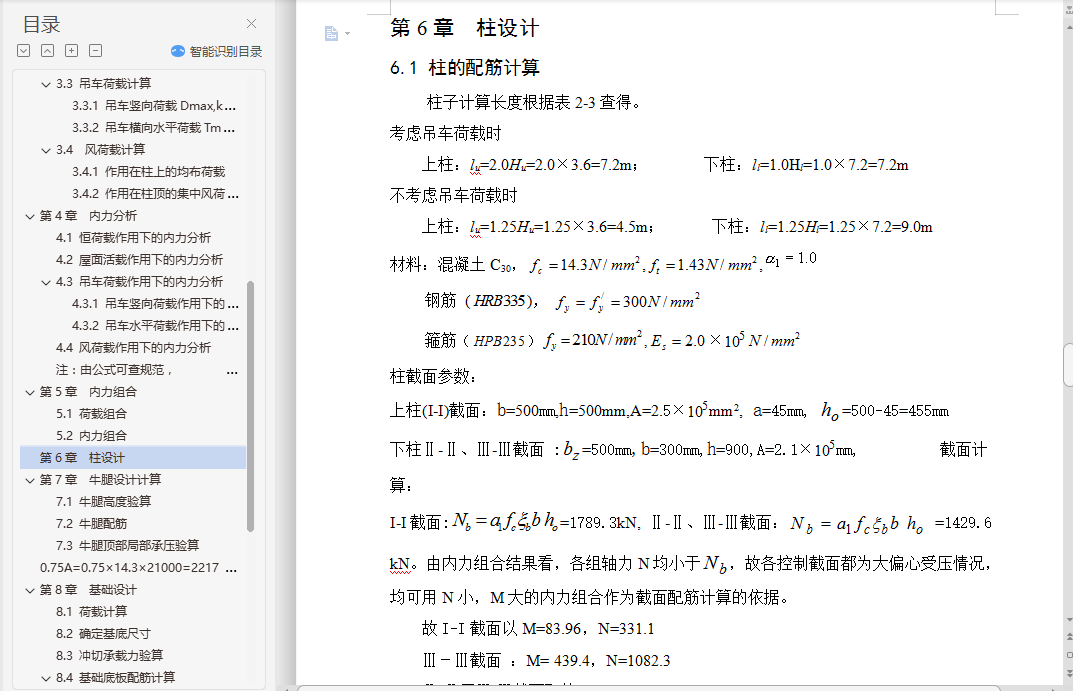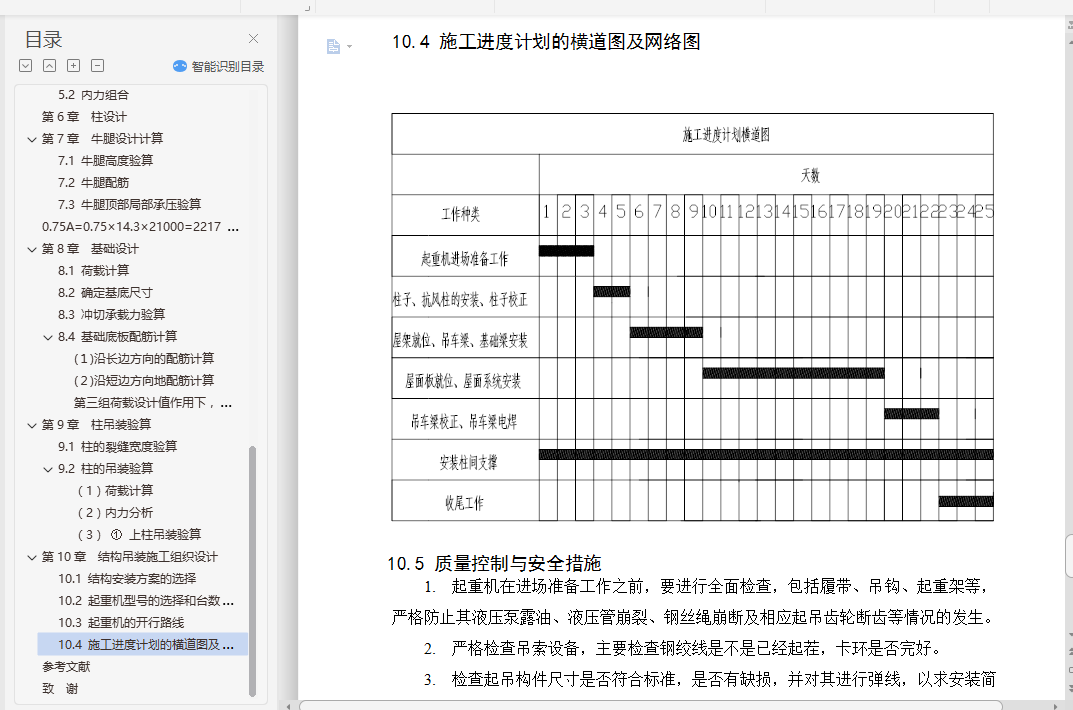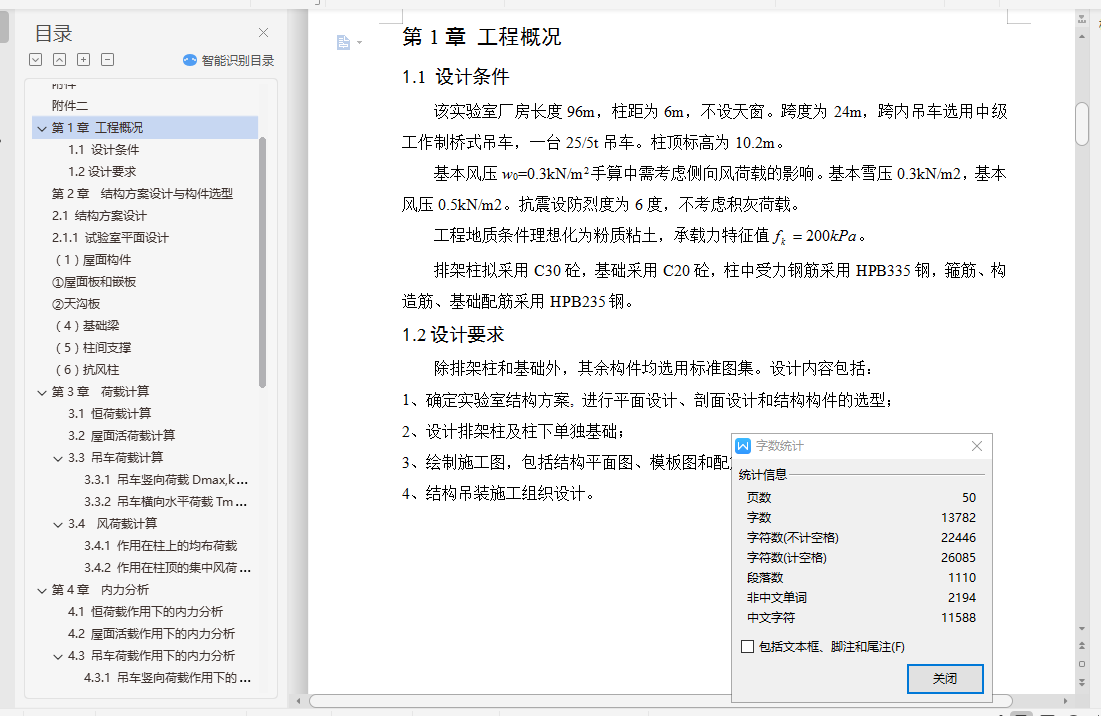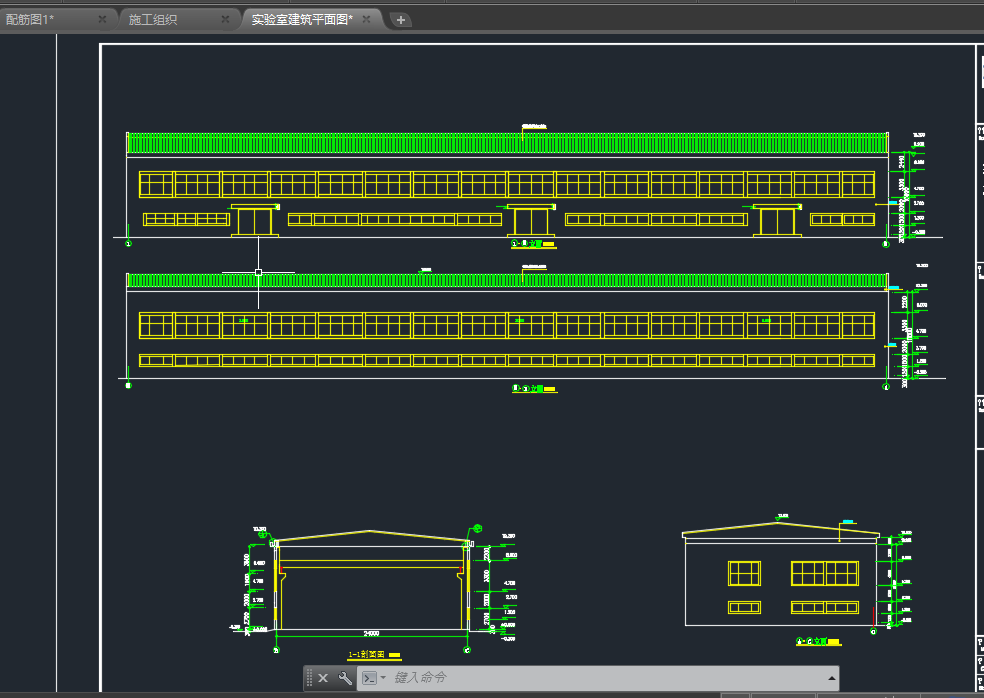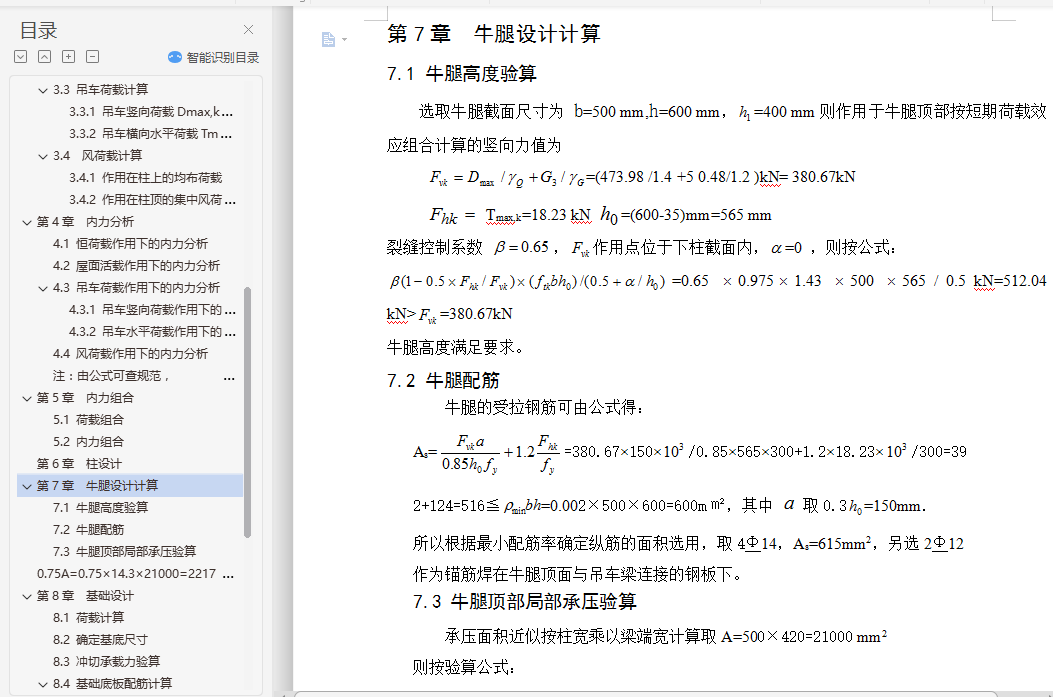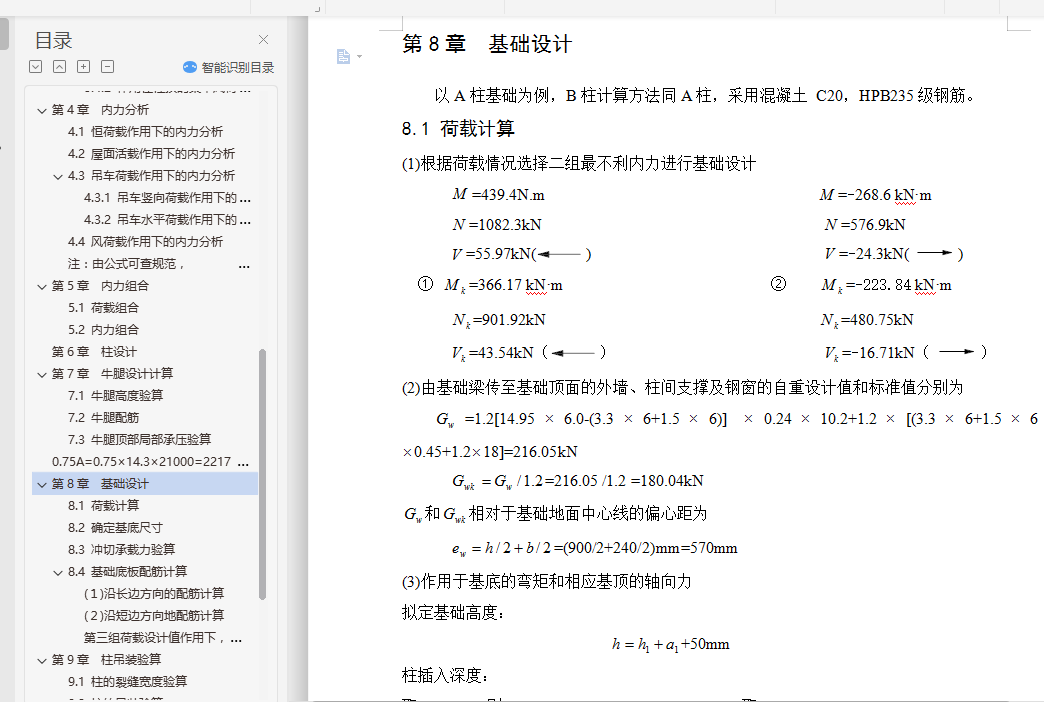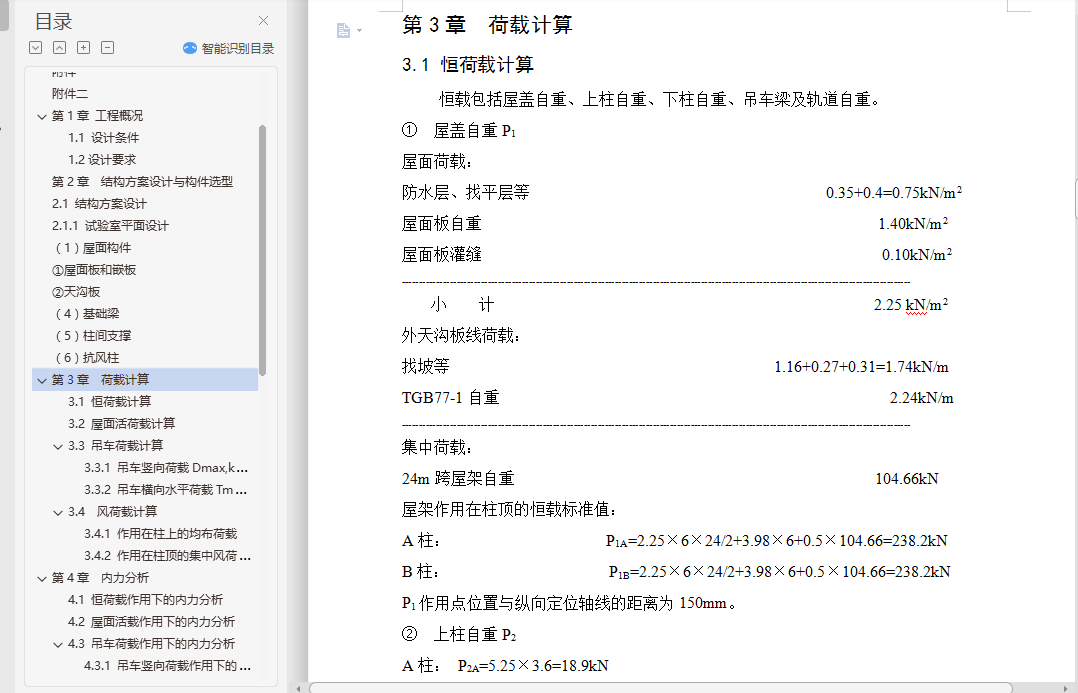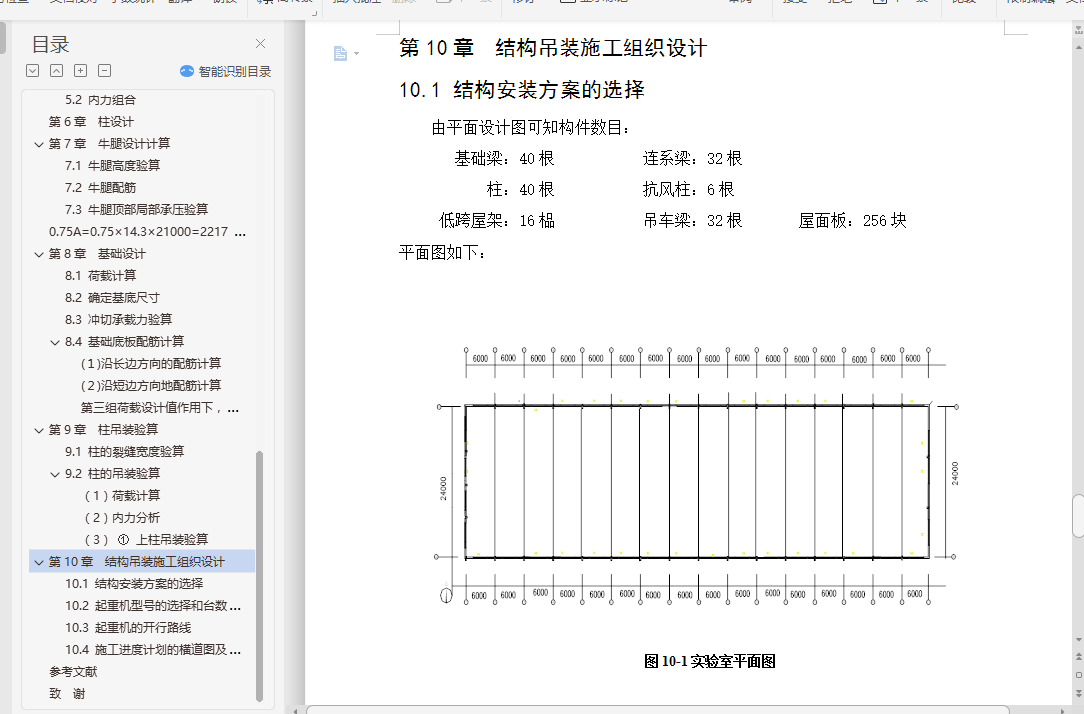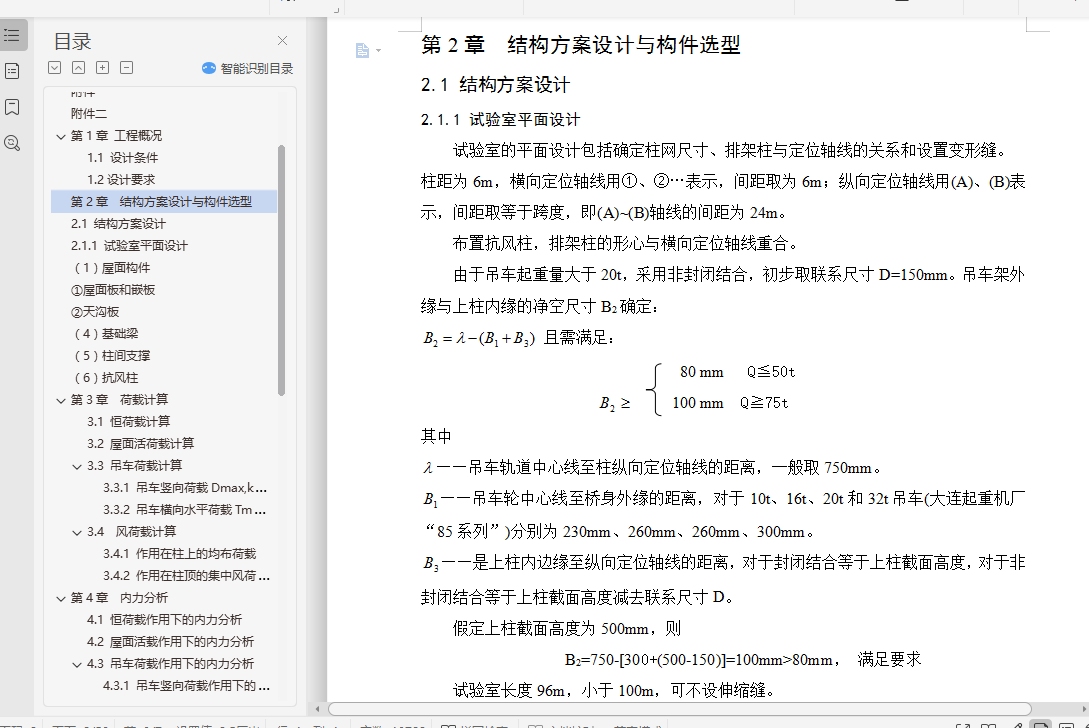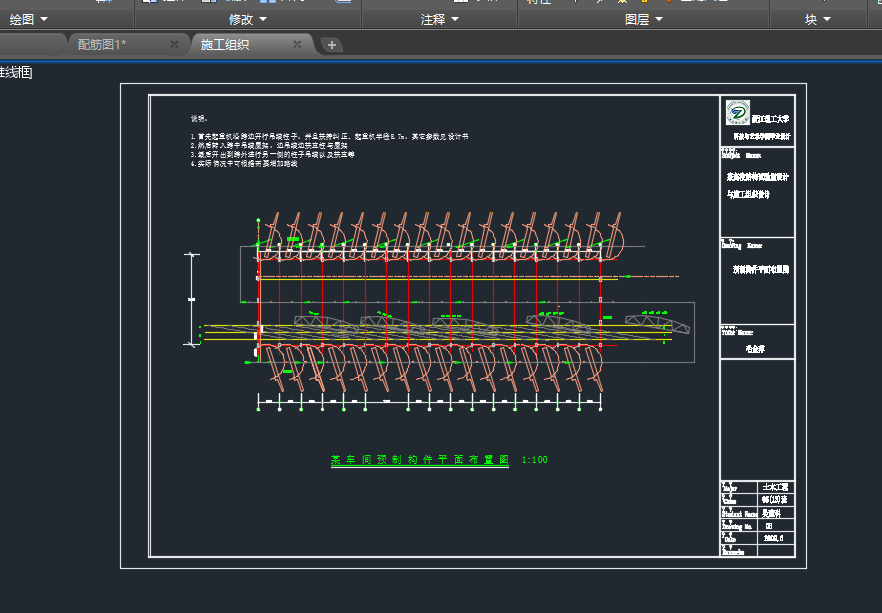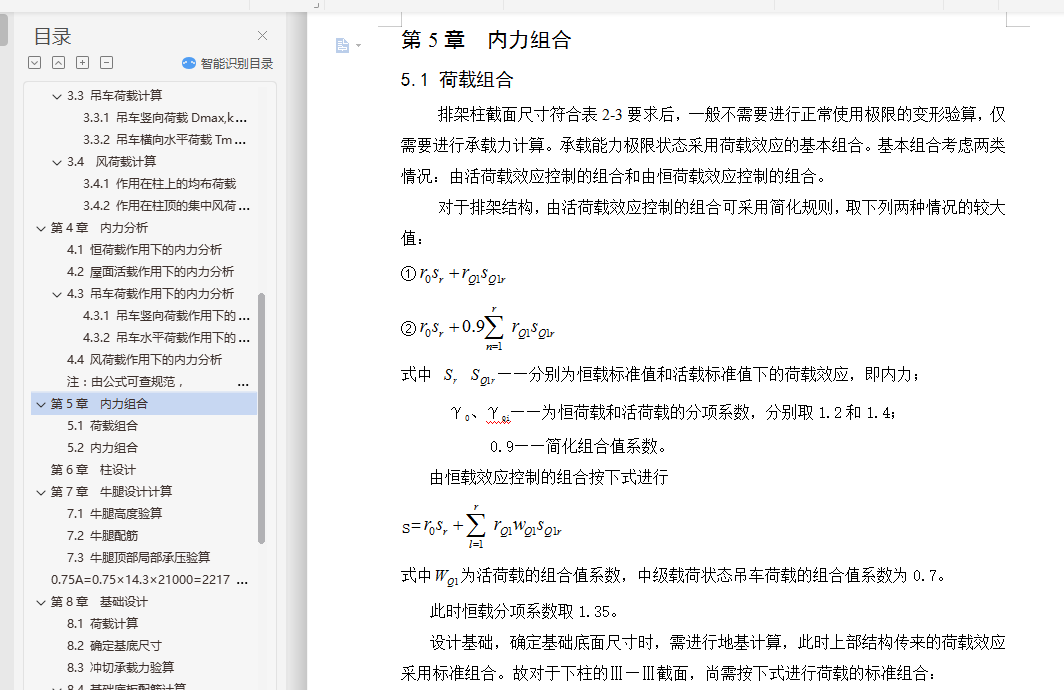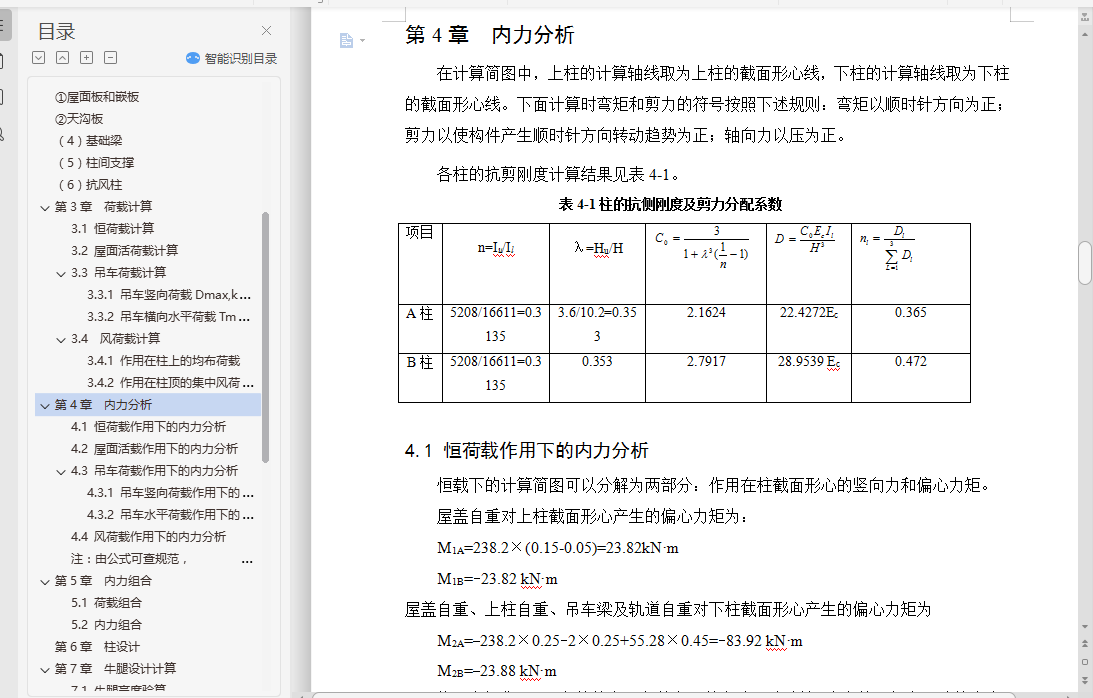摘要
本工程名称是某高校的结构试验室设计。采用单层钢筋混凝土排架结构。试验室的总长为96米,一跨跨度为24米,选用6米柱距,采用不上人屋面,总建筑面积约2304平方米。试验室的柱顶标高10.2米。其它基本资料:(1)手算中需考虑侧向风荷载的影响。基本雪压0.3kN/m2,基本风压0.5kN/m2。抗震设防烈度为6度,不考虑积灰荷载。(2)工程地质条件理想化为粉质粘土,承载力特征值 。(3)吊车选用中级工作制桥式吊车要求,设置一台25/5t吊车。
。(3)吊车选用中级工作制桥式吊车要求,设置一台25/5t吊车。
本设计书包括如下部分:
1. 工程概况;
2. 荷载计算,包括恒荷载、活荷载、吊车荷载、风荷载;
3. 排架结构的受力分析、计算以及组合等;
4. 柱设计,包括牛腿的设计;
5. 基础设计,包括基础的尺寸计算和基础配筋;
6. 施工组织设计,确定柱、屋架、以及其它构件的起重机开行路线,绘制施工进度计划表,最后施工组织技术说明,采取合理措施,以确保工程质量。
关键词:混凝土结构;排架结构;牛腿;杯形基础。
Abstract
Laboratory of the structure using single-layer reinforced concrete frame structure. The length of Laboratory is ninety-six meters,twenty four meters span,six meters pitch of columns,the total construction area about 1260 square meters. The elevation of Laboratory columns is 10.2 meters. Other basic information: (1) hand count in the need to consider the effects of lateral wind loads. Basic snow load 0.3kN/m2, the basic wind pressure 0.5kN/m2. Seismic intensity of 6 degrees, do not consider the deposition load.(2)The engineering geological conditions ideal for the silty clay, the value of bearing capacity characteristics.(3)choice of mid-level work crane overhead crane system requirements, set up a cable car 25/5t.
The design of the protect include the following components:
1. Project Overview;
2. Load calculation, Including Constant load, live load, wind load and the crane load calculation;
3. Trestle structure stress analysis, calculation and design, under all kinds of bent loads of stress analysis, calculation;
4. Column design, Including the design of corbel;
5. The foundation of design,Including the size of the basis of calculation and the basis of reinforcement;
6. Construction organization design, determine the columns, roof trusses, as well as the hoisting crane start line, construction progress and plans to take reasonable measures to ensure the quality of the projects。
Key word:Condensate structures;bent structure;bracket;cuplike structure foundation。
目 录
摘 要
Abstract
第1章 工程概况 ………………………………………………………………1
第2章 结构方案设计与构件选型 ………………………………………………2
2.1 结构方案设计 ………………………………………………………………………4
2.2 构件的选型 …………………………………………………… ……………………5
2.3 排架计算单元分析 …………………………………………………………8
第3章 荷载计算 ………………………………………………………………9
3.1 恒荷载计算 ……………………………………………………………………10
3.2 屋面活荷载计算 …………………………………………………………10
3.3 吊车荷载计算 …………………………………………………………………12
3.4 风荷载计算 ……………………………………………………………………13
第4章 内力分析 …………………………………………………………………14
4.1 恒荷载作用内力分析 …………………………………………………………………15
4.2 屋面活荷载作用下内力分析 …………………………………………………………15
4.3 吊车荷载作用下内力分析 ……………………………………………………………17
4.4 风荷载作用下内力分析 …………………………………………………………18
第5章 内力组合 …………………………………………………………19
5.1 荷载组合 ……………………………………………………………………20
5.2 内力组合 ……………………………………………………………………21
第6章 柱设计 ………………………………………………………………………23
第7章 牛腿设计 ……………………………………………………………………25
7.1 牛腿高度验算 …………………………………………………………………………25
7.2 牛腿配筋计算 …………………………………………………………………26
7.3 牛腿顶部承压验算 …………………………………………………………26
第8章 基础设计 ……………………………………………………………………27
8.1 荷载计算 …………………………………………………………………………28
8.2 基地尺寸的确定 ………………………………………………………………28
8.3 冲切承载力验算 ………………………………………………………………29
8.4 基础地板配筋计算 ……………………………………………………………31
第9章 柱吊装验算…………………………………………………………………32
9.1 柱的裂缝宽度验算 ……………………………………………………………34
9.2 柱的吊装验算 …………………………………………………………………34
第10章 结构吊装施工组织设计 …………………………………………………35
10.1 结构安装方案的选择 ………………………………………………………………35
10.2 起重机型号的选择和台数的确定 ……………………………………………………36
10.3 起重机开行路线 ……………………………………………………………………38
10.4 施工进度计划的横道图及网络图 …………………………………………………40
10.5 质量控制与安全措施 …………………………………………………………41
参考文献 ………………………………………………………………………42
致谢…………………………………………………………………………………43
